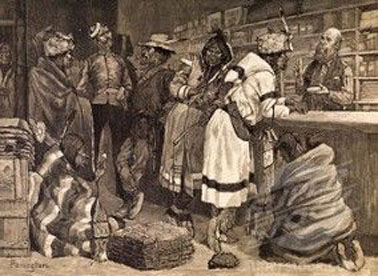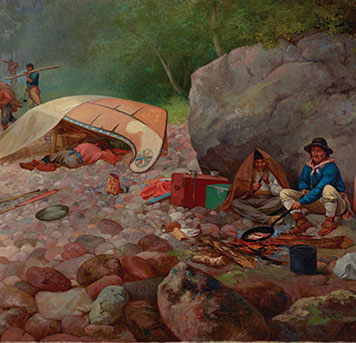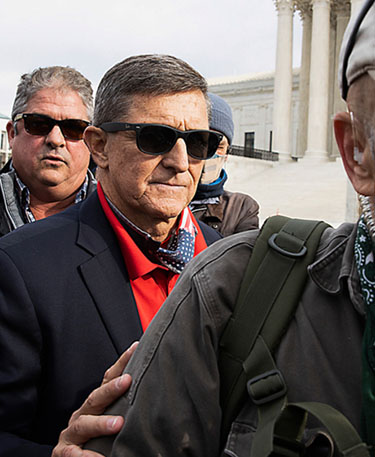“We have not yet realized that the Indian and his culture were fundamental to the growth of Canadian institutions”(and then there’s Democracy in America today)
Jun 7th, 2021 | By Randall White | Category: In Brief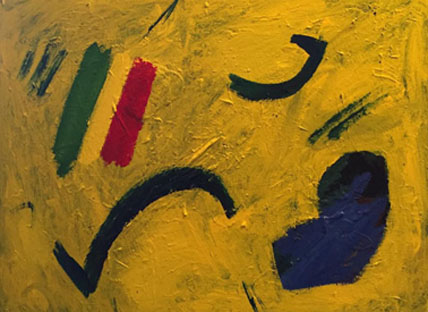
NORTH AMERICAN NOTEBOOK – RANDALL WHITE, FERNWOOD PARK, TORONTO. JUNE 7, 2021. The troubling big news in Canada right now appears in reports like : “How radar technology is used to discover unmarked graves at former residential schools” ; and “Papal apology for church’s role in residential schools may not be ‘way forward’: archbishop.”
In the midst of much not always enlightening commentary I think CBC News (believe it or not) has put together something helpful and even more or less objective with : “Your questions answered about Canada’s residential school system … Discovery at former residential school in Kamloops, BC has led to calls for action.”
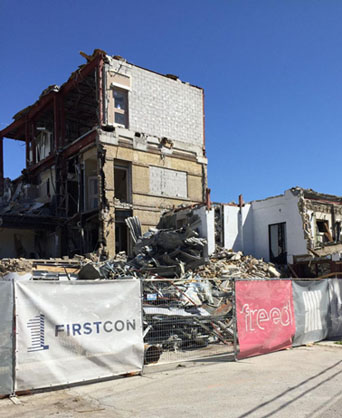
It is intriguing if not surprising that Canadian reporting on the residential schools issue seldom (if ever) acknowledges the parallel experience next door. See eg a National Public Radio report on “US Boarding Schools Were The Blueprint For Indigenous Family Separation In Canada” ; or a USA Today article : “Mass grave of 215 children in Canada a stark reminder of the dark history of Native American boarding schools in US.”
My personal view is that we are still light years away from honest conversations about the role of Indigenous Canadians in Canadian history. It is often said that the 1930s marked the height of the appalling residential school system in Canada (operated in conjunction with church organizations, as in the former Catholic school in Kamloops where radar technology has suggested as many as 215 graves of Indigenous schoolchildren).
At the same time, it was also in 1930 that Harold Innis’s still-in-print classic on The Fur Trade in Canada : An Introduction to Canadian Economic History included this provocative sentence in its striking conclusion : “We have not yet realized that the Indian and his culture were fundamental to the growth of Canadian institutions.”
“Canada” itself is an Indigenous or Native North American word. (Iroquoian more exactly. Like, if I understand correctly, the Algonquian words Saskatchewan, Manitoba, Ontario, Toronto, and on and on and on.) In the 1990s Brian Slattery at Osgoode Hall Law School was arguing that what were then legally known as Aboriginal peoples (as in the Constitution Act, 1982) “were active participants in the lengthy processes that eventually gave rise to the federation of Canada … Aboriginal peoples should be viewed as active participants in generating the basic norms that govern us … as contributors to the evolution of our Constitution and most fundamental laws.”
To me, as a Non-Indigenous Canadian who has been around for more than seven decades – in what now seems a rather different and more interesting place than it was in the 1940s and 1950s (to say nothing of the 1930s) – many more of we the people of Canada who are not Indigenous Canadians must somehow come to understand what the likes of Harold Innis and Brian Slattery have been trying to tell us for a few generations now : The diverse First Nations were in real historical fact fundamental to the growth of the present-day UN member state of Canada, that we should all be able to benefit from, contribute to, and enjoy in the 21st century.
Out of this understanding ought to come as well a less victimized narrative of the genuinely important and impressive role of Indigenous northern North Americans in modern Canadian development. And this might at least help give young Indigenous Canadians the forward-looking proud identity they deserve – and like everyone else even need to survive in the increasingly unsettled story of the new global village that apparently lies before us.
In the very end, however you go at the larger issue it is vastly complex. And it raises deep emotions on many sides among both Indigenous and Non-Indigenous Canadians. As in the past I am personally encouraged by the wisdom of some Indigenous leaders. I understand from my TV watching over the past several days that both Phil Fontaine and Murray Sinclair have observed it will still take time to reach any serious resolution of the broader questions at the bottom of the Indigenous past in Canada. That strikes me as very good advice.
But is there really a slow-motion right-wing coup going on in the USA right now?
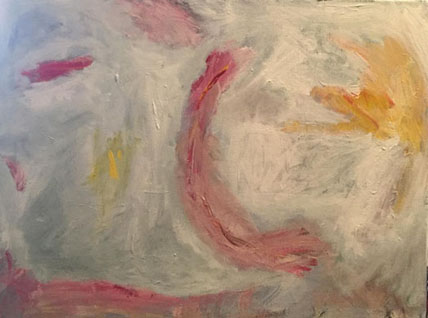
Meanwhile, right next door, watching CNN with Jim Acosta on the afternoon of Saturday, June 5, 2021 was a strong reminder (yet again) that there are reasons to be concerned as well about the future of Alexis de Tocqueville’s Democracy in America in the 21st century.
This also reminded me that I think Canada has a strong interest in an authentically democratic USA. A country run by the likes of the guy who asked an apparently receptive Lieutenant General Michael Flynn (ret.) why what the military has done in “Min-a-mar” can’t be done by the military in the USA does not make any sense for the people next door (north and south, and in most other parts of the world).
My own concerns about the future of American democratic political culture had already been raised by two excellent June 3, 2021 articles : Ron Brownstein’s “Watch What’s Happening in Red States … In states where Republicans control the legislature, American life is rapidly changing,” in The Atlantic ; and Ezra Klein’s “‘The Point Was to Win,’ Barack Obama Writes,” in The New York Times.
What both these pieces suggest, I think, is that the real-world political power of progressive forces in the USA today is not as strong as many of us had hoped. In his June 3 article Ron Brownstein urges that, at the often neglected state level of government, “despite unprecedented investment in local races, and Biden’s win at the presidential level, the [Republican] party … came out of the [2020] election with control of both legislative chambers in 30 states, compared with just 18 for Democrats (with one additional state divided and Nebraska officially nonpartisan).”
This strikes me as a somewhat unusually strong or maximalist characterization of current Red State strength. If you tighten the definition to include not just control of legislative chambers but governors’ offices as well, the number of Red States drops from 30 to 23 (or just under half : more like the 2020 presidential popular vote). I think it is nonetheless worth contemplating the 30-state maximalist definition of Republican strength – as a guide to just how much harder Democrats need to work over the near future.
From this angle the Top 10 Red States ranked by population size are Texas, Florida, Pennsylvania, Ohio, Georgia, North Carolina, Michigan, Arizona, Tennessee, and Indiana, and their total population is not quite 128 million people. The Top Ten Blue States are California, New York, Illinois, New Jersey, Virginia, Washington, Massachusetts, Maryland, Colorado, and Oregon, and their total population is somewhat more than 119 million people.
Yet does what’s happening in American politics in the late spring and early summer of 2021 really amount to the “slow-motion right-wing coup” recurrently contemplated on CNN with Jim Acosta on the afternoon of Saturday, June 5, 2021?
I don’t quite think so myself, but I altogether agree that the all-too-conceivable prospect of such a thing bears watching closely. The latest public pronouncements of Donald Trump are no less than just plain crazy and much worse (even treasonable eg). And the old piece of Americana attributed to Robert Frost, and quoted by Ezra Klein in his June 3 contribution to The New York Times, is no doubt also worth bearing in mind, as America looks out on the summer of 2021 : “A liberal is a man too broad-minded to take his own side in a quarrel.”
